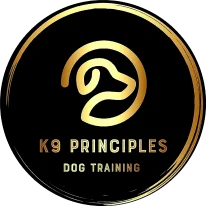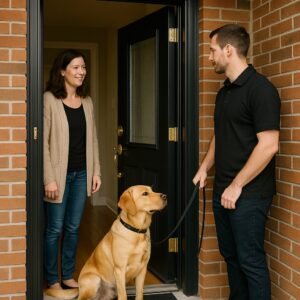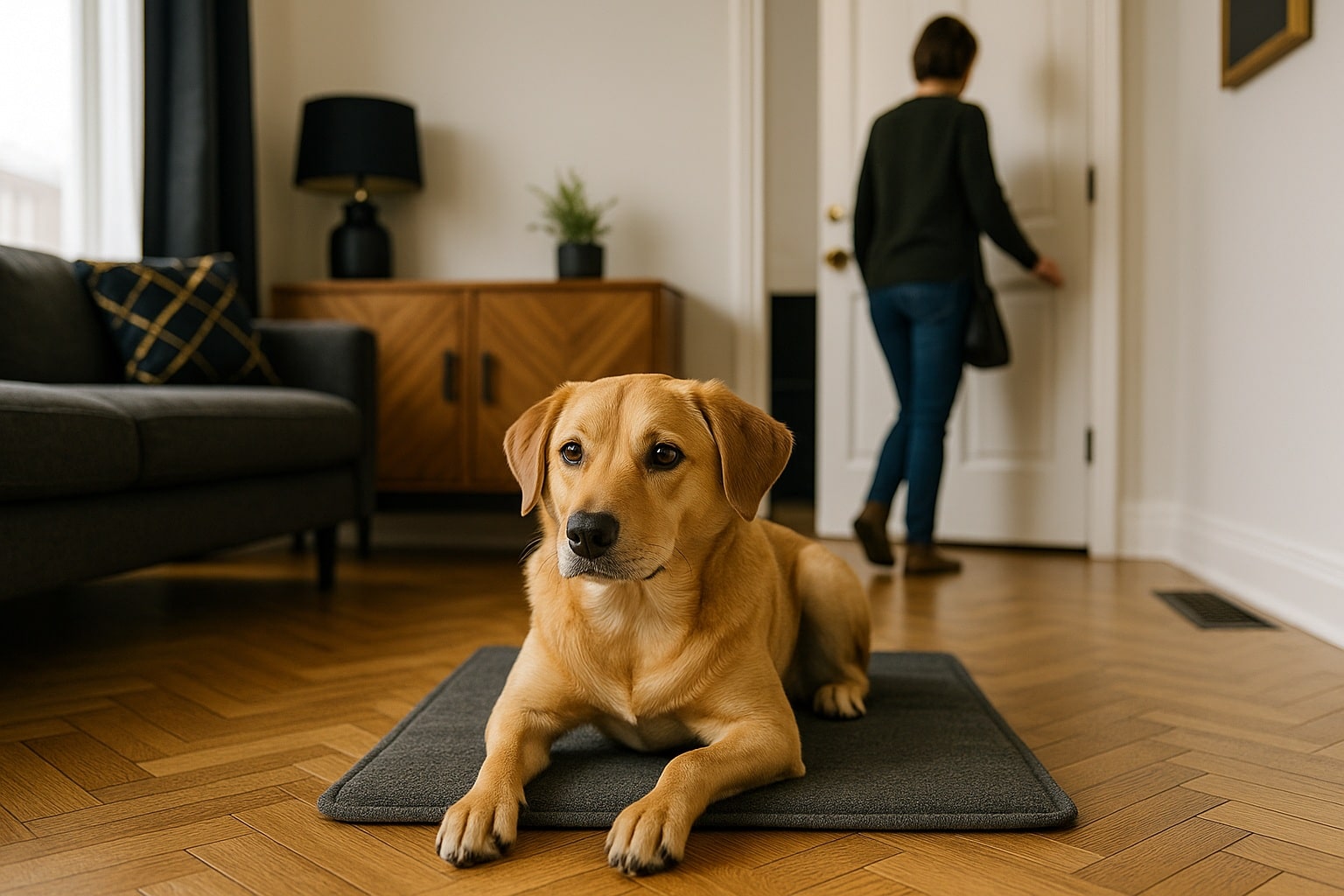If you’ve ever closed the door and felt that twist of guilt in your stomach, you’re not alone. Separation anxiety is one of the most emotionally draining challenges for new owners, and it can make even simple errands feel impossible. K9 Principles has helped families in Hamilton and the surrounding area transform chaos into calm, using gentle, evidence-based methods that make sense in real homes. If you’re searching for dog training in Hamilton, you’re likely overwhelmed by advice that’s either far too harsh or far too vague. You need a clear plan, you need it to be kind, and you need it to fit your life. That’s exactly what we deliver. Throughout this guide, we will show you how to spot the early signs, build a solid calm-at-home foundation, and teach your dog to handle alone-time without panic. You’ll see why a routine-first approach beats quick fixes, how to use enrichment the right way, and how to avoid common mistakes that quietly reset your progress. We will also explain how we work in-home across the region, so if you’re weighing up options for Hamilton dog training, you can make a confident, informed choice. And yes, we will use “cue” rather than “command,” because language matters when we’re teaching calm, not compliance. Whether you’re brand new to dog training, or you’ve already tried a few things that didn’t stick, this is your blueprint for change.
What Separation Anxiety Really Is—and Why It’s Not “Being Naughty”
Separation anxiety is a panic response to being alone or separated from a bonded person. It’s not stubbornness, spite, or a dog “acting out.” Panic shifts your dog’s brain into survival mode, so behaviours like barking, howling, pacing, drooling, door-scratching, or trying to escape aren’t choices so much as alarms. The fix isn’t about asserting control; it’s about changing the association with alone-time and building real coping skills. When owners come to us for dog training in Hamilton, what they often describe is a pattern: they grab keys, the dog stiffens, mouth goes tight, panting starts, and by the time the door clicks, the soundtrack is already frantic. That chain is predictable—and that’s the good news. If something is predictable, we can re-wire it. With our Hamilton dog training, we start by separating normal frustration from true anxiety. Bored dogs shred cushions when their needs aren’t met; anxious dogs struggle to settle even after a full day, and the distress appears specifically around departures and absences. When we identify the root, we pick the right plan. This clarity alone saves weeks of trial and error and protects your relationship from unnecessary stress. If you’re early in your dog training journey, understanding this distinction stops you wasting time on advice that blames the dog or advises you to “let them cry it out,” which can flood them with more fear and set you back. 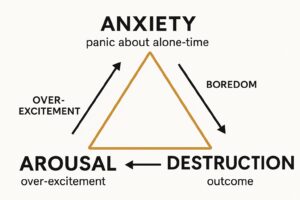
Early Signals You Might Be Missing (and How to Read Them)
Most owners look for the obvious signs—barking that rattles the letterbox, neighbours complaining, scratches at the door. The smarter play is to catch the subtle signals that show anxiety rising before it bursts. Before departures, watch how your dog tracks you. Do they “shadow” your steps, sit on thresholds, or pin their ears when you touch the handle? Do pupils expand in brighter rooms? Is there stretchy yawning that isn’t about sleep, or a little lick of the nose that seems out of place? These micro-signals tell you your dog is crossing from comfortable into concerned. With our dog training in Hamilton sessions, we ask owners to film short clips of their pre-departure routine and the first five minutes after leaving. You’ll start spotting patterns almost immediately: the moment the keys lift, the tail drops; the second shoe goes on, pacing begins. This is golden data. Why? Because separation anxiety is solved by working below the threshold of panic. If we can see the exact second your dog’s stress spikes, we can design rehearsals that stop us ever crossing that line. This is at the heart of good Hamilton dog training for anxiety: we trade huge, stressful absences for tiny, safe “micro-absences” that your dog can handle and even learn to relax through. If you’re completely new to dog training, think of it like learning to swim with the waterline just under your chin—not over your head.
Why It Starts: Genetics, Life Changes, and Accidental Habits
There’s no single cause. We see sensitive temperaments that lean anxious from puppyhood, and we also see dogs who cope beautifully until life changes land like a stack of dominos. A house move, a new baby, a return to the office after working from home—each shift can change the rhythm of your household. Dogs thrive on predictability; when the diary flips overnight, it can feel like the ground is moving. Even well-meant routines can create accidental associations. If cuddles, chatter, and toys always appear when you’re present, and silence falls like a curtain the moment you grab your coat, the contrast becomes the cue for worry. In dog training in Hamilton, we show owners how to rebalance the day so calm experiences also happen when you’re not the centre of attention. Another common ingredient is over-arousal. If your dog’s day is a rollercoaster of high-octane play with no structured downtime, their nervous system never gets to reset. That overstimulated brain finds stillness hard, and stillness is exactly what we’re asking for when we step outside. That’s why effective Hamilton dog training for anxiety always pairs alone-time practice with taught relaxation. And finally, history matters. Rescue dogs often arrive with gaps in early socialisation, or experiences that primed them to worry about being left. None of that makes your dog broken. It simply means we need a kinder, more methodical plan. That’s where personalised dog training earns its keep.
The Calm Foundations We Build Before Any Alone-Time Practice
You don’t build a house on wobbly ground. Before we touch departures, we create conditions where calm can actually grow. First is a predictable daily rhythm. We help you design a loose schedule for meals, loo breaks, training windows, and rest, so your dog’s nervous system knows what’s coming next. Predictability is a kindness. Second is taught relaxation. We use a simple “settle on a mat” process that teaches your dog the skill of down-shifting. Picture it like a dimmer switch for arousal rather than an on/off button. We keep criteria so low your dog can’t fail, rewarding stillness, soft eyes, and steady breathing. This is practical dog training in Hamilton because it fits real homes with doorbells, deliveries, and busy streets outside. Third is decompression walks. Not marches. Not fetch frenzies. Just time to sniff, move at a natural pace, and let the world trickle in gently. This kind of walk helps the brain process the day and makes rest easier when you’re back home. Fourth is environmental setup: a safe area with a comfortable bed, water, and a predictable chew or food puzzle that pairs with relaxation, not frantic excitement. In thoughtful Hamilton dog training, we avoid turning chews into bribes; instead, they’re part of a ritual of calm. Finally, we tidy up your pre-departure routine so it’s neutral rather than theatrical. Quiet shoes on. Keys handled at odd times throughout the day. Coat on, coat off, no big deal. All of this creates the stable platform we need. New to dog training? This foundation is your best investment of energy; it shrinks the mountain you’re about to climb.
Graduated Alone-Time Training: The Exact, Gentle Progression
This is where we put science into motion. The goal is not to “toughen up” your dog; it’s to teach them that your absence is safe and predictable. We start with what your dog can already handle without anxiety—sometimes that’s you stepping behind an internal door for two seconds, sometimes it’s simply standing up from the sofa and sitting down again while your dog remains relaxed. We call this the threshold. In dog training in Hamilton, we coach families to run micro-rehearsals that begin below threshold and end below threshold. That means you always return before stress rises. It feels slow, but slow is fast here. We string together unremarkable, calm reps until your dog’s brain starts labelling absences as nothing to worry about. We’re not distracting; we’re re-wiring. Progression looks like this: you step to the hallway for a second and return. Repeat until your dog barely flicks an ear. Then two seconds. Then five. Then you open the front door and close it immediately. No drama, no goodbyes, no confetti when you come back. When those reps are uneventful, we add a true five-second absence, watching on a camera for any shift from relaxed to concerned. If concern appears, we’ve gone too far; we dial back. That’s the engine of good Hamilton dog training for anxiety—criteria that breathes with the dog in front of you. For many beginners in dog training, the hardest part is resisting the urge to leap from five seconds to five minutes. We will keep you honest. We also randomise small details so the dog doesn’t attach panic to a single cue. Sometimes shoes on, sometimes slippers, sometimes you pick up your bag and place it down again without leaving. This breaks the link between your pre-exit cues and the feeling of loss. When we do leave for slightly longer absences, we set the environment for success: white noise to smooth hallway sound, a room with fewer street triggers, and a familiar chew that supports relaxation, not frantic gnawing. Step by step, your dog learns that nothing bad happens, and that your return is inevitable. 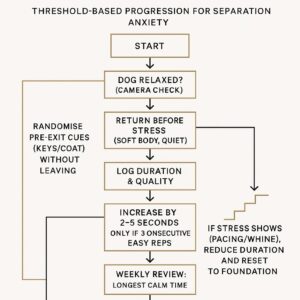
Exits and Returns That Don’t Spike Panic
Most of us turn exits and reunions into tiny theatre shows. We add chatty goodbyes, tight hugs, and fireworks on return because we’re kind, and we worry. The trouble is, that big emotional swing turns your presence into a neon sign and your absence into a cliff-edge. In our dog training in Hamilton sessions, we will teach you a ritual that’s wonderfully boring: calm exit, calm return. You prepare without fuss, step out, step in, and carry on. Your dog learns that comings and goings aren’t events. A quiet “good dog” for remaining settled carries more power than squeals and cuddles at the door. This approach is standard in thoughtful Hamilton dog training, and it’s a relief once you feel how much pressure it takes off both of you. If you’re new to dog training, imagine you’re a pilot keeping the cabin smooth. No sudden drops. No highs and lows. Just steady air.
The Right Tools, Used the Right Way
Tools don’t fix separation anxiety on their own, but the right setup makes the journey smoother. Crates can be brilliant for dogs who already find them cozy; they should never be used as a place to “ride out” panic. For dogs who prefer choice, pens or baby gates create a safe zone without the feeling of being boxed in. White noise or a simple fan masks hallway chatter in apartment buildings. Wi-Fi cameras are essential in modern dog training in Hamilton plans because they let you measure precisely when concern appears and disappear before it grows. Food-based enrichment—like a frozen food puzzle or a gentle chew—can be helpful, but only if it pairs with a relaxed state. If it’s so exciting that your dog spikes arousal, it’s working against you. In Hamilton dog training, we also teach owners to gradually separate routine cues from departures: pick up keys randomly during the day, put on a coat and sit down for a minute, open and close the front door while you remain home. We’re dulling the edge of those triggers. If you’re just starting dog training, remember that tools are supports. The plan—calm foundations, threshold-based rehearsals, neutral exits and returns—is what changes behaviour for good.
Common Pitfalls That Stall Progress
The biggest mistake we see is flooding: leaving for “just a few minutes to test them” and returning to a dog that’s paced, cried, and panicked. Panic rehearsals make the next attempt harder, not easier, because the brain remembers fear so efficiently. With our dog training in Hamilton, we will show you how to avoid accidental setbacks by logging every session and staying below threshold, even when progress feels small. Another pitfall is inconsistency. If one family member plays it cool at exits and another turns reunions into a party, the dog gets mixed signals. Clear household agreements keep training clean. A third pitfall is over-tiring with high-octane fetch or dog-park sprints just before you leave. That can spike adrenaline and make stillness impossible. Balanced decompression and taught relaxation win here. With our Hamilton dog training, we also see owners rely too heavily on background TV or radio, which can sometimes add unpredictability rather than smoothing it out. Purposeful white noise is usually better. For those beginning dog training, the final pitfall is impatience. We know you want your life back quickly. But anxiety unravels in layers, and each honest, low-key repetition lays another stitch of calm. Respect the process, and it will take care of you.
Exercise, Diet, and Sleep: The Behaviour Triangle for Resilience
Behaviour doesn’t live in a vacuum. A dog who hasn’t decompressed properly, is powered by sugar-spike snacks, or sleeps like a teenager in exam week will find stillness tougher. In our dog training in Hamilton plans, we audit three pillars. First, exercise: we prioritise varied movement and sniffing over constant ball-chasing. Movement patterns change state; sniffing lowers heart rate and encourages a calmer, more investigative brain. Second, diet: a simple, consistent feeding routine that suits your individual dog. Many anxious dogs do best with predictable mealtimes and gentle, longer-lasting food activities that don’t whip up arousal. Third, sleep: quality and quantity. Most dogs need more sleep than we realise, and daytime naps in quiet spaces can be the difference between a settled dog and a frazzled one. When people ask about Hamilton dog training, they expect us to focus on cues and routines, and we do—but we are also the person who will ask how your dog sleeps at 2 p.m. on a Tuesday. If you’re starting dog training, this triangle is the scaffolding around everything you build.
Multi-Dog Homes, Rescue Dogs, and Special Considerations
In multi-dog homes, we often need to split training so each dog can rehearse success without emotional contagion. If one dog panics, the other can catch that wave. In our dog training in Hamilton work, we will set up separate calm zones and tailored progressions, then carefully reunite when both dogs are coping. Rescue dogs sometimes need an extended decompression period before we touch alone-time. New sounds, new smells, new routines—everything is new, and new can feel loud. For these dogs, Hamilton dog training begins with predictability first: quiet rituals, consistent sleep, slow exposure to household rhythms. For puppies, early confidence with short, low-key absences can prevent problems later. We fold those micro-absences into everyday life: pop to the next room, pop back, repeat. If you’re totally new to dog training, think of it like teaching a toddler that you always come back, and that being alone for a moment is safe.
When To Loop In Your Vet: Medication and Supplements the Smart Way
There are times when training alone isn’t kind or efficient. If your dog’s anxiety is so intense that they can’t eat, can’t settle, or escalates within seconds, we will collaborate with your vet. Short-term medical support can lower the volume of panic just enough for learning to take place. This isn’t a shortcut; it’s a bridge. In dog training in Hamilton, responsible collaboration is part of E-E-A-T: it shows we value welfare over macho bravado. Supplements can also help some dogs, but they work best alongside a structured plan, not instead of one. If you’re venturing into dog training for the first time, you don’t need to know the pharmacology—that’s for your clinical team—but you do need to know that seeking help is a strength, not a failure.
Measuring Progress Like a Pro (and What to Do When You Plateau)
Progress is the antidote to doubt. We have every family log two simple markers: maximum calm duration and quality of calm. Duration might move from five seconds to twenty seconds to two minutes across sessions. Quality moves from fidgety to soft-eyed to fully settled. In dog training in Hamilton, we also track exact triggers: key lift, coat on, door crack, latch click, footsteps away, and the second the dog’s body language shifts. If you plateau, we adjust one variable at a time. If opening the door is the sticky point, we desensitize that step in isolation before stacking it with others. If you’re brand new to dog training, the key is resisting the urge to change five things at once. Methodical change lets you see what actually works, not what you hope worked. Video is your ally, not just for spotting stress, but for celebrating wins you might miss in real time. The moment your dog glances at the door and then sighs into their bed? That’s the brain choosing rest. That’s everything.
Why In-Home Private Dog Training Changes Everything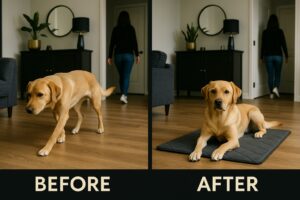
Context is king. We can hand you a generic checklist across a table, or we can step into your hallway and hear the echo that spooks your dog when the door shuts. We prefer the hallway. In-home private training support lets us shape the training to your floor plan, your schedule, your neighbours, and your dog’s personal history. When people search for Hamilton dog training, they’re not looking for a one-size-fits-all lecture; they want real-world coaching that fits school runs, shift work, apartments with thin walls, and front doors that rattle. That’s the heart of our dog training in Hamilton approach: personalised plans that respect the actual life you live. We will be the calm in the room when things wobble, the person who tells you when to push and when to pause, and the one who reminds you that progress is rarely a straight line. If you’re early in dog training, having someone in your corner can be the difference between sticking with the plan and slipping back into guesswork.
Conclusion
Separation anxiety can make your world feel small, but it’s not permanent. With calm foundations, threshold-based rehearsals, neutral exits and returns, and thoughtful support, your dog can learn to relax while you’re gone. Our dog training in Hamilton approach is practical, compassionate, and tailored in-home, because real progress happens where real life happens. If you’ve been scanning Hamilton dog training options and second-guessing every decision, know this: you don’t have to do it alone. We will guide you step by step, keep you honest with criteria, and celebrate every quiet, steady win along the way. If you’re totally new to dog training, that’s not a disadvantage—it’s a clean slate. We’ll fill it with skills that last.
Contact us for more information:
- Name: K9 Principles
- Address: Haldimand County, Greater Hamilton Area, Burlington, and Most of Norfolk County
- Phone: 289 880-3382
- Email: k9principlesinc@gmail.com
- Website: www.k9principles.ca
FAQs
-
A1. Timelines vary with history and severity, but most families see steady progress within a few weeks when we keep rehearsals below threshold. Our structured dog training in Hamilton plan includes clear criteria, frequent check-ins, and adjustments so you don’t stall. The aim isn’t quick fireworks; it’s durable calm that holds up in real life.



